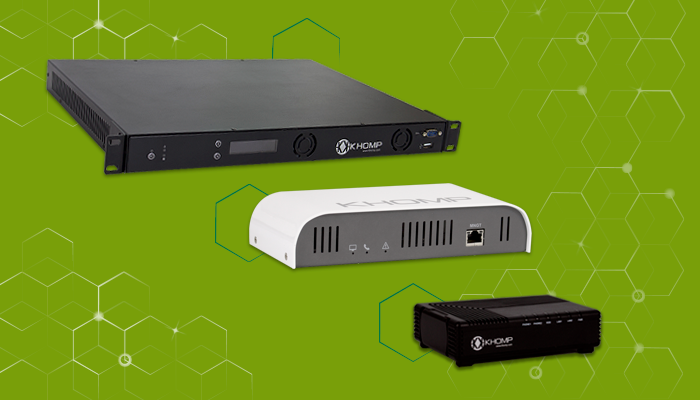The migration from analog to digital has been offering a series of advantages to the most diverse media formats. And this has been no different in the telephony industry. The greater demand for IP calls has driven the development of more advanced technologies for voice compression and digitization. Currently, the most common ones are G.711U and G.711A. These codecs convert voice into data packets and send them over the network via TCP/IP.
Media Gateways and ATAs
For this purpose, Khomp has designed its Media Gateway devices, which are critical for IP telephony, and they come in three different lines: UMG , KMG MS, and Kmedia. The UMG line is targeted at small businesses, SIP application developers, and VoIP carriers, with a maximum capacity of up to 46 simultaneous calls. The KMG MS line is recommended for call center companies and VoIP carriers, with support for up to 2,010 simultaneous calls. The Kmedia line is designed to function in the core of the telephony carriers operations, with a maximum capacity of up to 3,215 simultaneous calls.
By using a Media Gateway, a company not only achieves gains of scale but also enjoys a more specialized product and gets access to more information, mainly about what goes on in their network. “Khomp KMG line offers call analysis, route management, and resource survivability. Among other features, we can highlight that the gateways have modular interfaces, i.e. you can plug them on analog lines, E1/T1 and GSM interfaces and convert any-to-any calls”, explains Ricardo Vieira, Product Manager at Khomp.
While media gateways are designed for robust, high-density simultaneous calls environments, the Analog Telephone Adapters (ATAs) are a solution for converting analog extensions into IP extensions, to be used individually in enterprise scenarios.
QoS — Quality of Service of an IP Telephony Network
In this scenario, telephony companies need to be ready not only to offer the service, but also to provide it with the same quality the users expect. To achieve the so called QoS (Quality of Service) you need to size the network capacity appropriately, which will allow you to process all simultaneous calls and other related services seamlessly, with no delays or loss of data packets.
The use of devices with the required specifications for each project is also of great importance. These devices are the ones that will provide the necessary resources to allow the correct reading of the information that flows over the network.
Other Benefits of an IP Telephony Network
The benefits of using VoIP in a telephony system are widely known. “Performance and quality, reductions in infrastructure costs, the amount of information available about each call — all these are advantages of the IP network over the analog network”, reinforces the Product Manager.
In addition, using the same structure to send both voice and data allows communication companies to expand their portfolio. “In this way, it is possible to increase the average ticket without the need to create a new infrastructure. That is, you have a low capital investment with a fast return”, he added.

